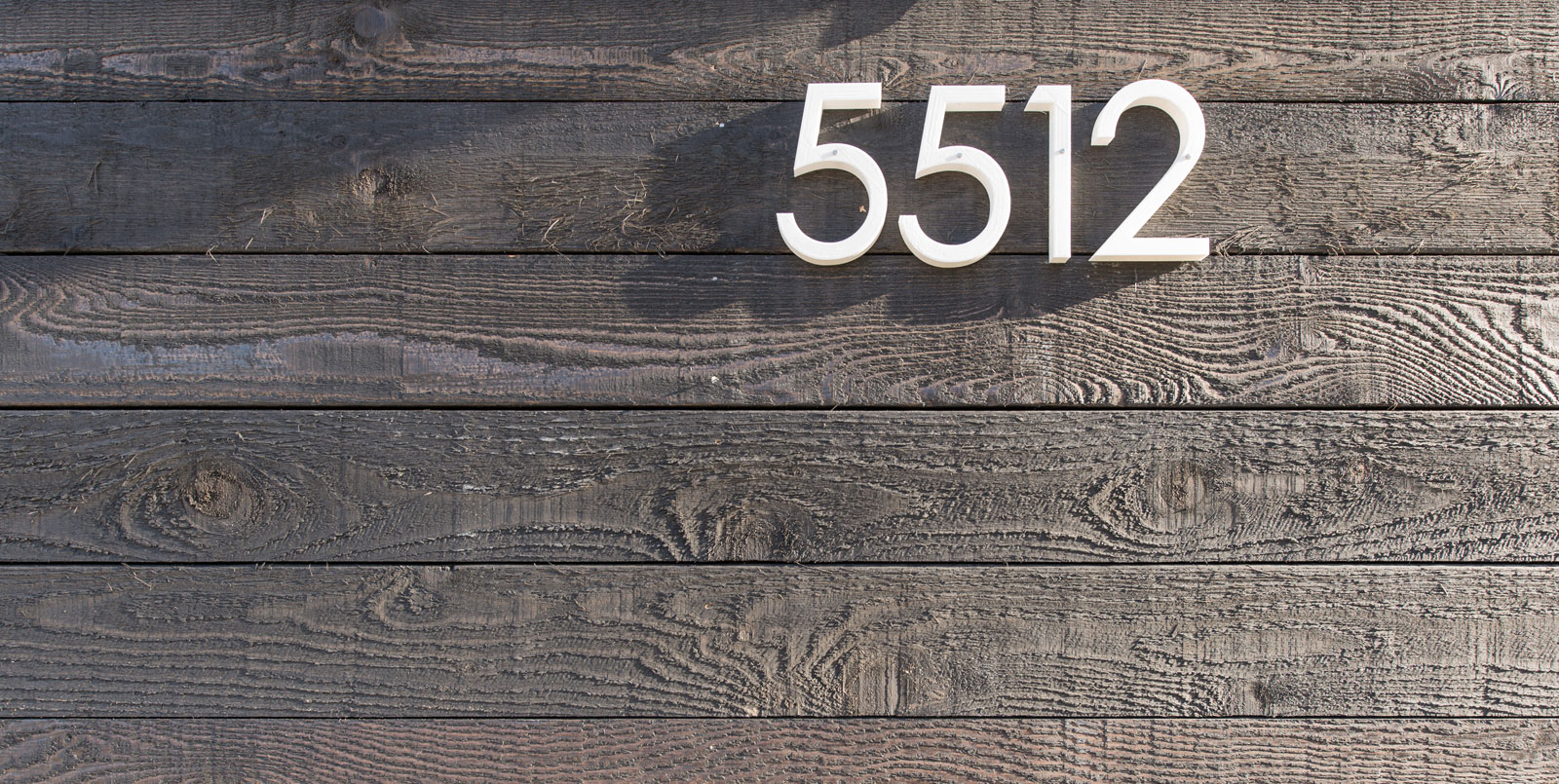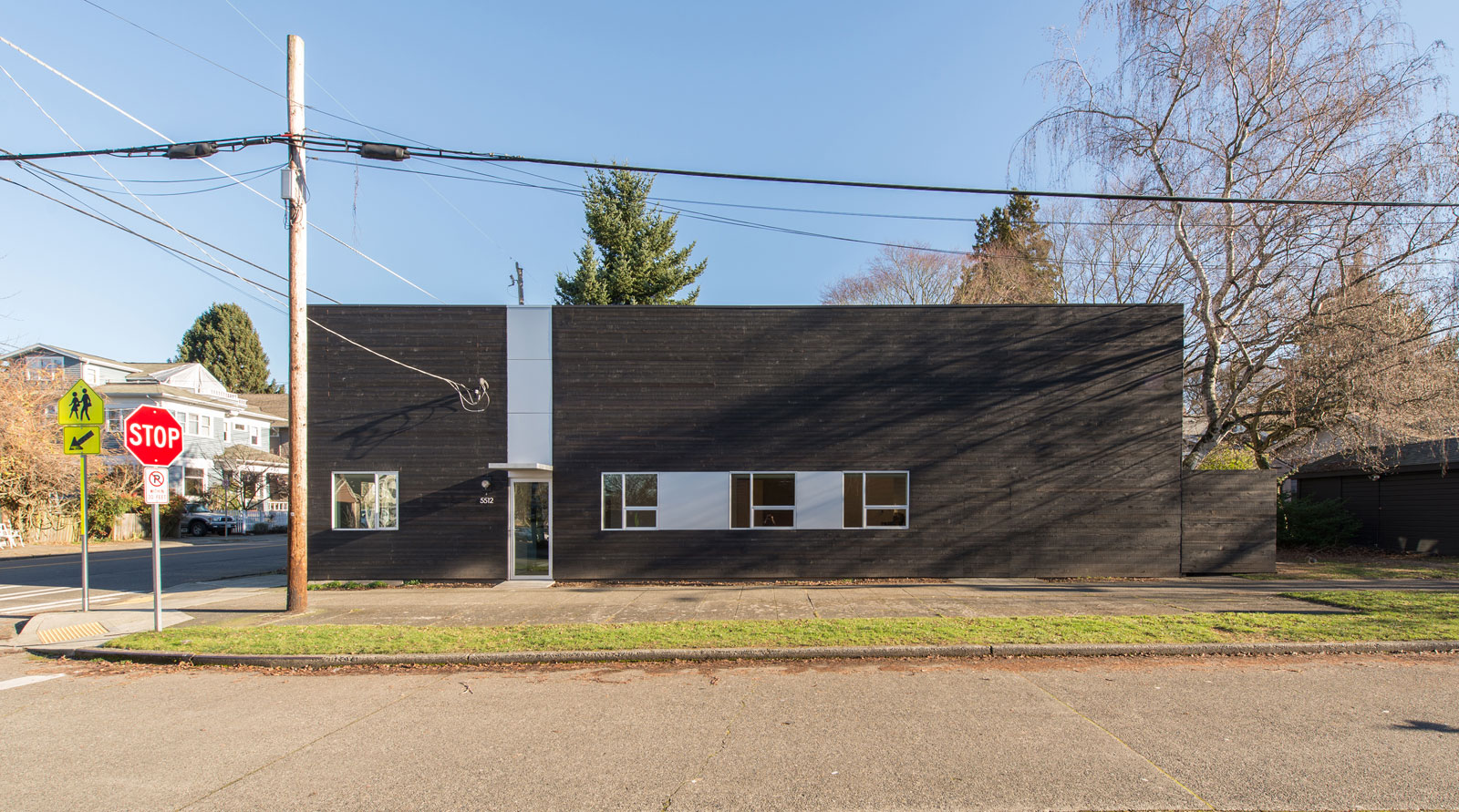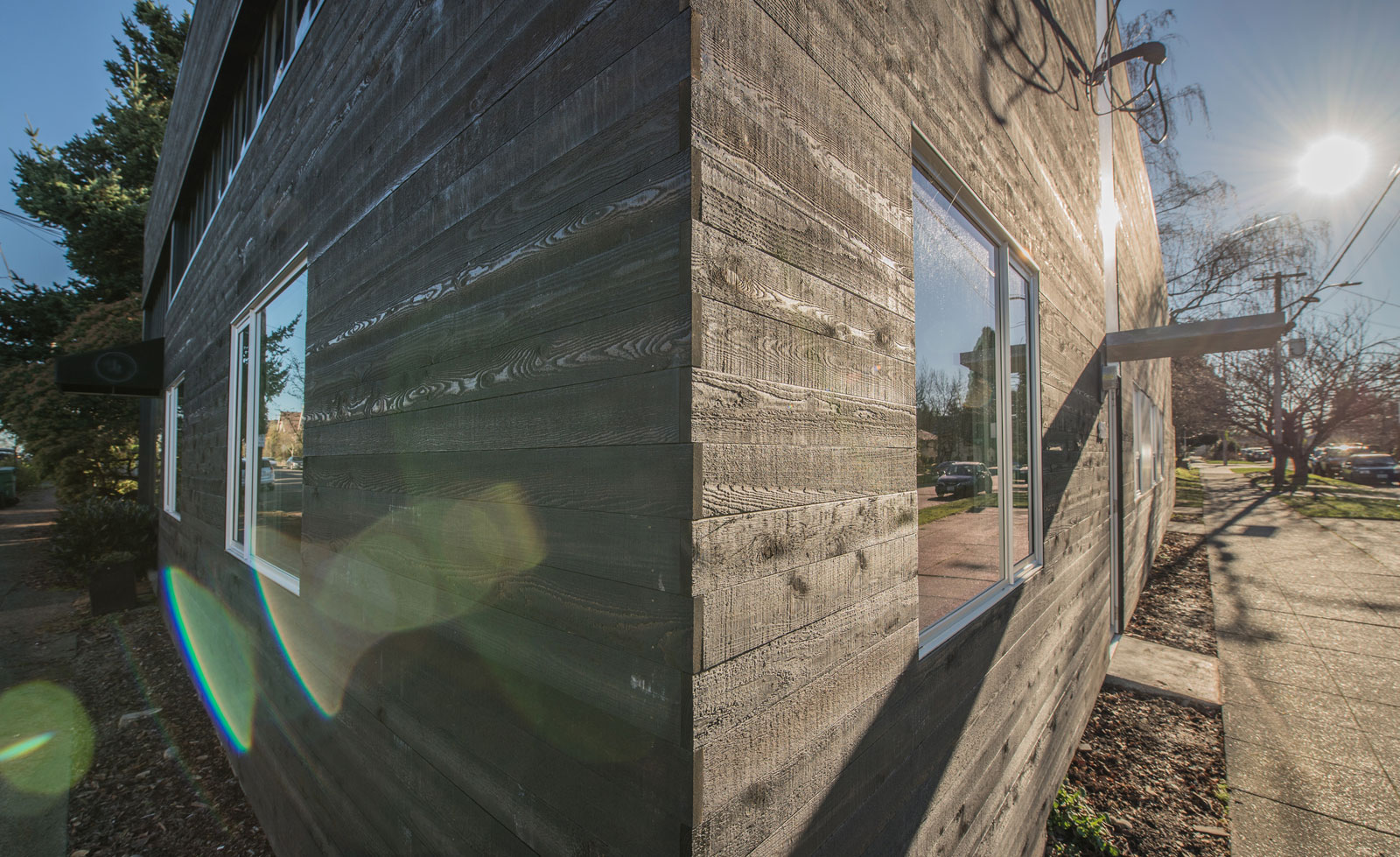
[All photos by BUILD LLC]
This fall we moved the BUILD World Headquarters to a quaint little building in Seattle’s Wallingford neighborhood. The existing structure was in need of some urgent architectural assistance and Team BUILD dove right into the necessary updates. Part of these updates involved replacing the tired siding package at the existing envelope. Our initial design concepts led us to darker solutions for the building’s skin and there were several interesting ways to achieve this look. We like using cedar as it’s local to the Pacific Northwest, it has a natural resistance to rot, it’s cost-effective, and when finished correctly, it looks beautiful. With cedar being the clear winner for a timeless siding material, the question became how to best finish it.
We had recently become familiar with the Japanese technique of Shou-Sugi-Ban, which translates to “burnt cedar board” and it piqued our interest. The method, said to be in practice since the 1700’s, provides a natural preservative to the wood. The process involves charring the wood, cooling it, cleaning it with a wire brush, and finishing it with a natural oil (here’s a quick video on the process). We were immediately drawn to a natural method which keeps the wood protected from moisture, bugs, and even fire. At the same time, it added a new technique to our knowledge of siding strategies and offered an interesting narrative for the project. It seemed like the perfect solution. So we turned our curiosity into action and tried it out on a few samples of cedar.
Much to our surprise, the results looked terrible. The burned cedar was blotchy, the heat brought the sap out of the wood, which congealed on the surface, and worst of all, the boards continued to give off the odor of, well, a burning building. Without much deliberation, we determined that it was clearly not the right technique for our projects, let alone the headquarters. Maybe there are different techniques that lend to better results, maybe the process only works with certain types of cedar, or maybe the finished product simply requires a certain level of acceptance. There were numerous variables, and we didn’t feel the need to explore the process further.
We instead tapped into a tried and true staining process used on years’ worth of BUILD projects: staining cedar. Specifically with charcoal stain #70159 by Daly’s. There are several characteristics we appreciate about a simple staining process. While there is also variation in the final product of stained cedar, it’s a result of the different textures and colors of the wood itself, the sap doesn’t make an appearance on the surface, and the odor from the stain disappears quickly.

The stained envelope of horizontal 1×4 tongue and groove cedar met our expectations, and when combined with the Bright Silver ALx01 aluminum panels from Oculus, the composition makes for a clean, simple representation of the modern work we do. Interestingly enough, we’ve had several individuals poke their heads in the office and compliment us on the Shou-Sugi-Ban siding. And we’ve revealed that the siding treatment is just a stain.

Are there some philosophical lessons to take away from this experiment? We’re not sure. Maybe the nostalgia and ritual of the Shou-Sugi-Ban process has surpassed its practicality, perhaps we rushed the time and labor-intensive artisanal craft, or perhaps the poetics of the process didn’t fully resonate with us. These considerations aside, one thing is very clear: We enjoy experimenting, but with a set of finite variables. If a successful result can’t be reached in a reasonable amount of time, we will reference the already tested methods that have proven to work and sustain over time.

We’re extremely happy with the results at BWHq, and the response from our neighbors and visitors has been fantastic! As the both feet on the ground company that we are, we constantly keep our eyes out for fresh ideas in bringing buildings to life, while maintaining a pragmatism about executing those ideas.
Cheers from Team BUILD





